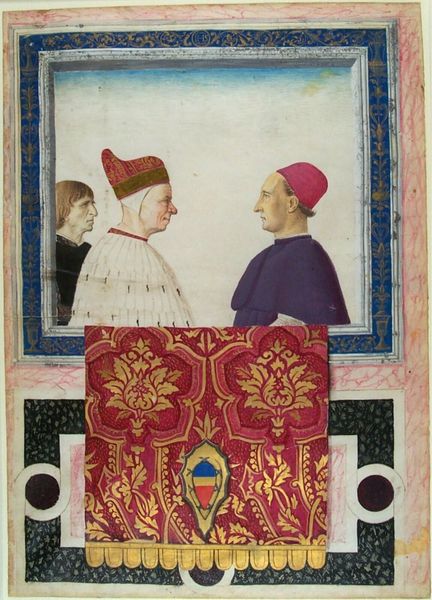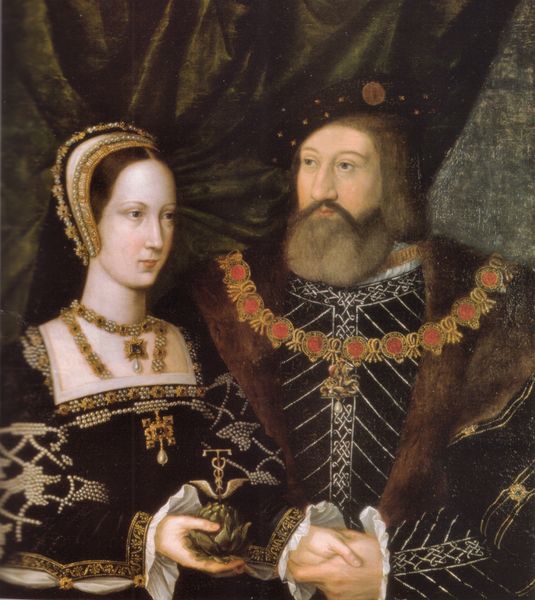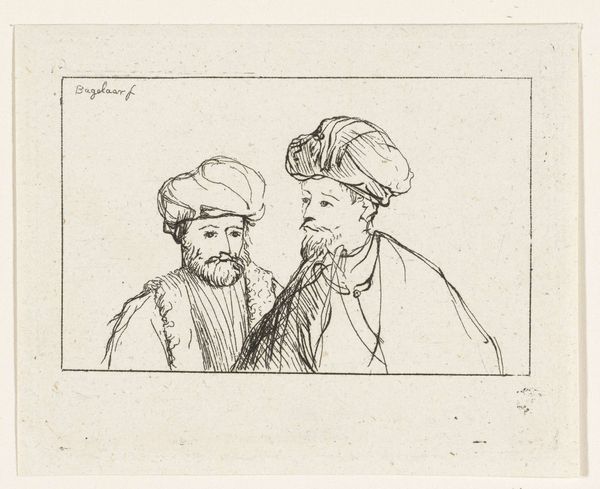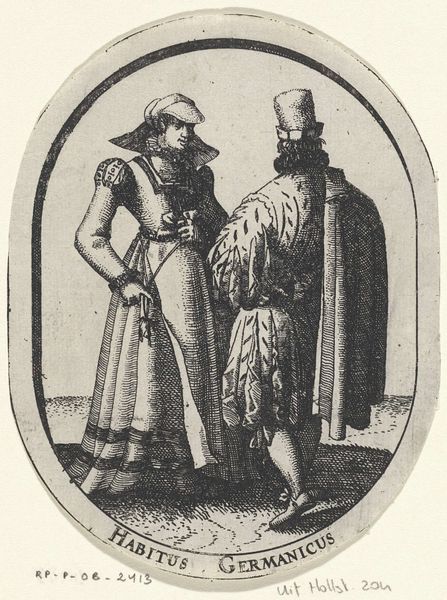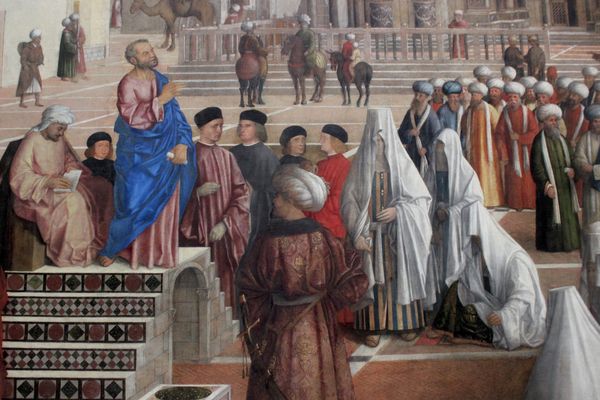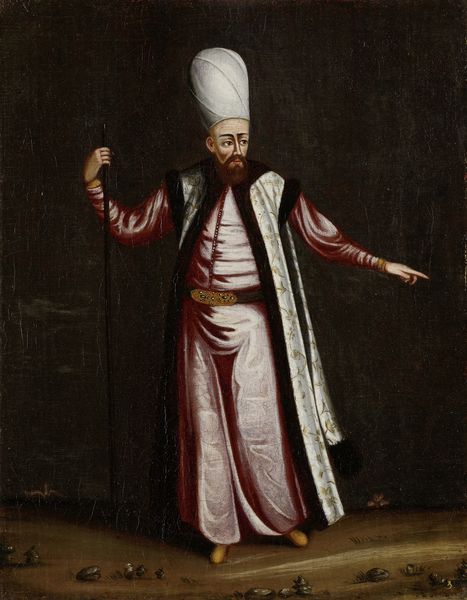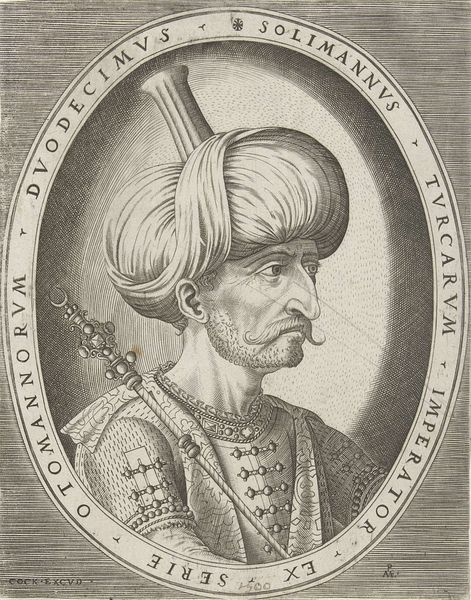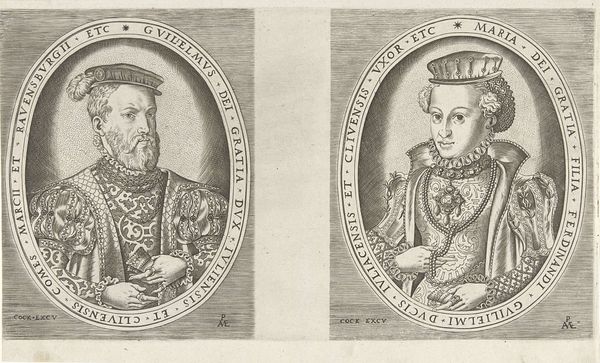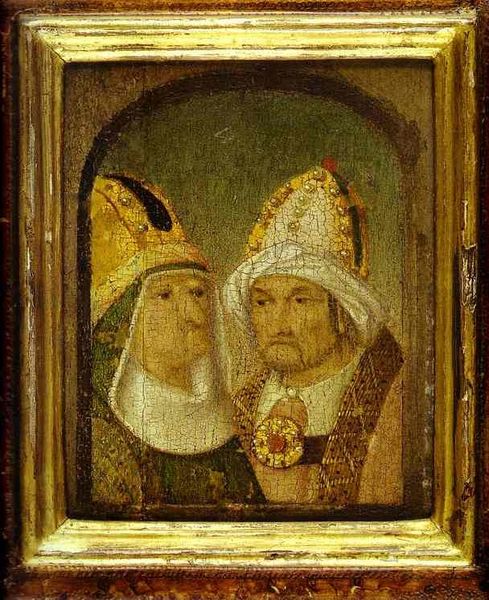
#
head
#
possibly oil pastel
#
oil painting
#
portrait reference
#
portrait head and shoulder
#
animal portrait
#
animal drawing portrait
#
facial portrait
#
portrait art
#
fine art portrait
#
digital portrait
Copyright: Public domain
Curator: Look at this double portrait attributed to Gentile Bellini, dating back to around 1480. It’s identified as depicting Sultan Mehmed II, also known as Fatih Sultan Mehmet. Editor: It strikes me as remarkably…divided. Two figures in conversation, yet almost completely isolated from each other, separated by the dark backdrop. There’s a palpable tension. Curator: Exactly. Consider Bellini’s own positionality as a Venetian artist working at the Sultan’s court. The painting serves as a record of cultural exchange and the commissioning process inherent in the production. How do we interpret artistic patronage and power dynamics when art travels across cultures? Editor: While acknowledging those dynamics, can we not also appreciate the formal contrast? Note the left figure, clean lines, a youthful smoothness to the face…almost ethereal. The right, however, weighted down by heavier linework, the clear aging around the eyes, a certain groundedness. Curator: Groundedness that arises from the materials available to Bellini, and the skill of his workshop. The pigments used, their sources, and their cost—they reflect global trade routes and the very real material circumstances of artistic production under Imperial mandate. It invites questions about how such a likeness might serve diplomatic relations. Editor: Diplomatic perhaps, but aesthetically, this duality amplifies its power. See how their turbans echo each other, similar yet subtly different in ornamentation? It binds them, speaks to shared status while simultaneously allowing Bellini to delineate stark differences in character and possibly…authority. The interplay of color alone, restrained versus richer, evokes entirely different emotional landscapes. Curator: Precisely! This contrast likely signifies shifts in the very structure of labor. Were multiple hands involved? Does it signify changes in Ottoman trade policies influencing availability of materials during the project? The question is what it tells us about how identities were being fashioned – quite literally – through these commissioned objects. Editor: So, you view it primarily through the lens of its making? For me, while recognizing those elements, I can’t dismiss its compelling composition— the push and pull of those gazes and how skillfully Bellini contrasted forms, all serving the narrative weight embedded within its structure. Curator: And I find that the power is rooted precisely there – how it was fabricated, the materials available, and the social context influencing every brushstroke, inviting discourse beyond the visual realm. Editor: Well, it's an invitation I won’t refuse but also view as testament of form in conveying even wider complexities than purely historical means might achieve.
Comments
No comments
Be the first to comment and join the conversation on the ultimate creative platform.
